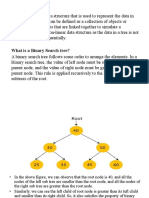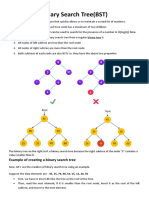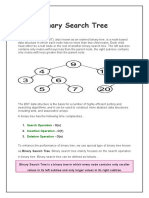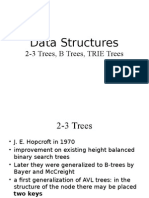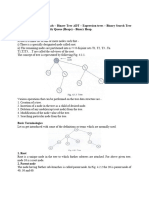0% found this document useful (0 votes)
88 views51 pagesETCS-209: DATA Structure Odd Semester 2020: Binary Search Tree
1. Find the inorder successor of the node to be deleted (the node with the minimum value in the right subtree).
2. Replace the value of the node to be deleted with the value of its inorder successor.
3. Delete the inorder successor node (which will have no more than one child).
This allows the binary search tree to remain balanced after deleting an internal node with two children.
Uploaded by
Rohit GargCopyright
© © All Rights Reserved
We take content rights seriously. If you suspect this is your content, claim it here.
Available Formats
Download as PPT, PDF, TXT or read online on Scribd
0% found this document useful (0 votes)
88 views51 pagesETCS-209: DATA Structure Odd Semester 2020: Binary Search Tree
1. Find the inorder successor of the node to be deleted (the node with the minimum value in the right subtree).
2. Replace the value of the node to be deleted with the value of its inorder successor.
3. Delete the inorder successor node (which will have no more than one child).
This allows the binary search tree to remain balanced after deleting an internal node with two children.
Uploaded by
Rohit GargCopyright
© © All Rights Reserved
We take content rights seriously. If you suspect this is your content, claim it here.
Available Formats
Download as PPT, PDF, TXT or read online on Scribd
/ 51
